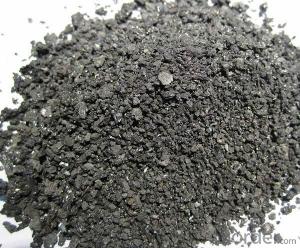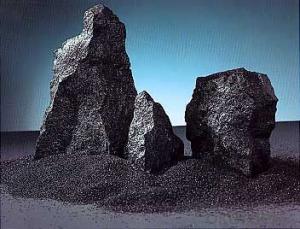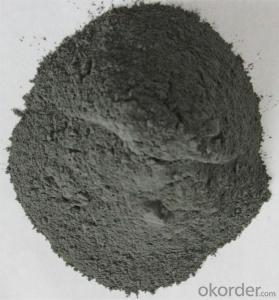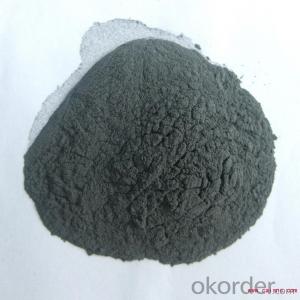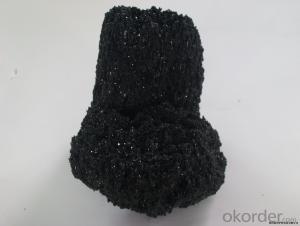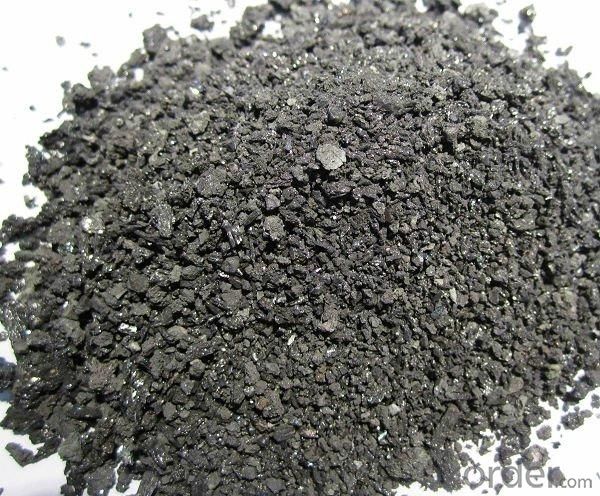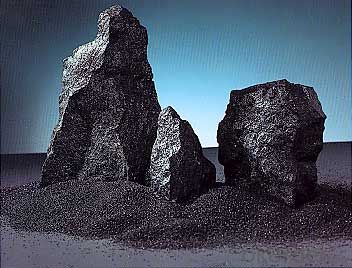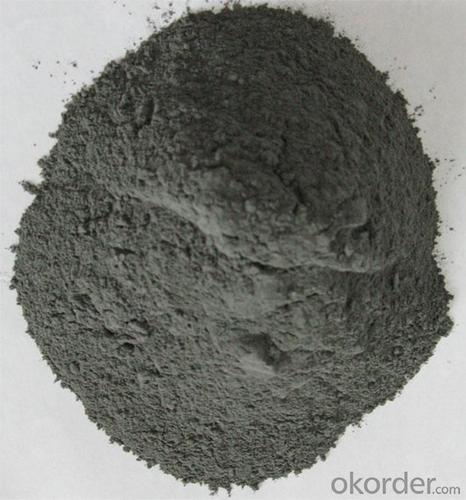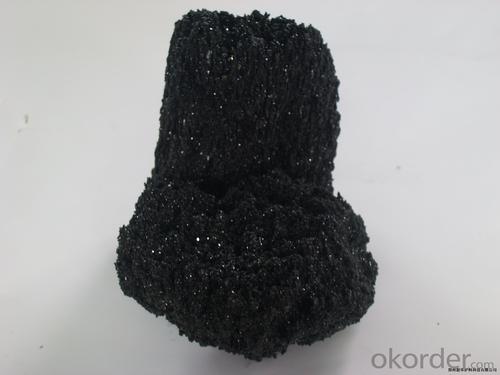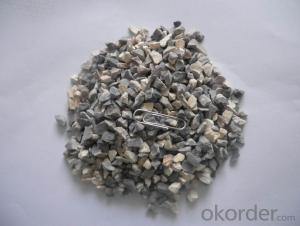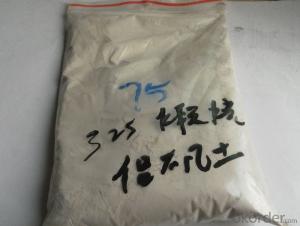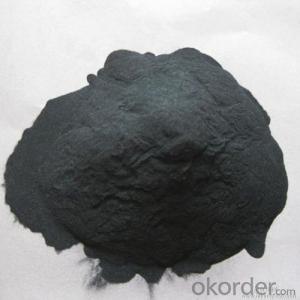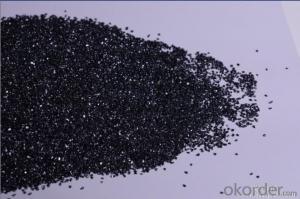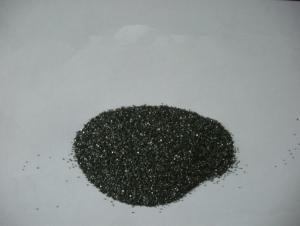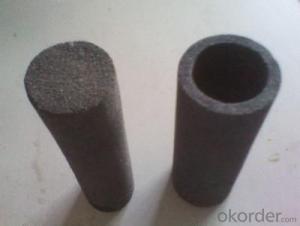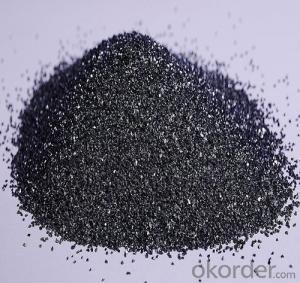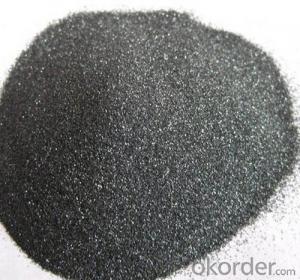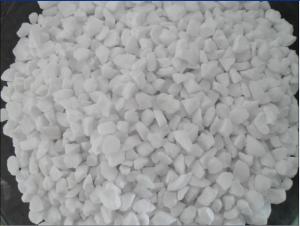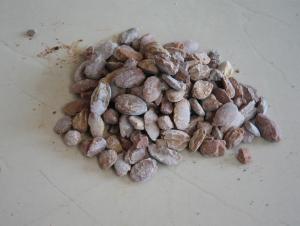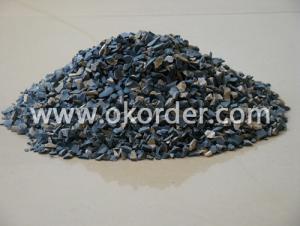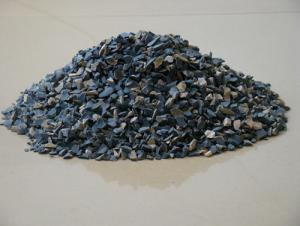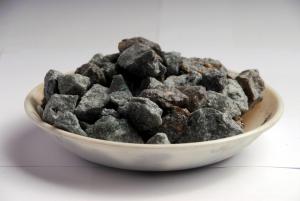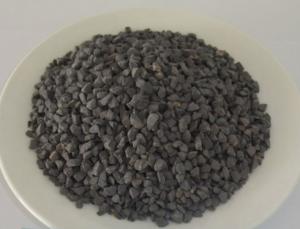Raw Materials for Refractory:Black Silicon Carbide/Black SiC for Processing Low Tensile Strength Material
- Loading Port:
- Tianjin
- Payment Terms:
- TT OR LC
- Min Order Qty:
- 25 m.t.
- Supply Capability:
- 3000 m.t./month
OKorder Service Pledge
OKorder Financial Service
You Might Also Like
Black Silicon Carbide/Black SiC for Processing Low Tensile Strength Material
1.Structure of Silicon Carbide Description
Black Silicon Carbide is produced with high temperature in a electric resistant furnace from a mixture of quartz sand and petroleum coke.
Black silicon carbide is typically used for working on cast iron ,non-ferrous metals, stone, leather, rubber, and other materials which requires sharp cutting characteristics. The mineral is also used widely as a refractory material and metallurgical additive.
2.Main Features of the Calcined Bauxite
Its hardness is between that of fused alumina and synthetic diamond and mechancial intensity of it is also greater than that of fused alumina. It is brittle and very sharp and has a certain degree of electrical and heat conductivity.
3.Main usage of the Calcined Bauxite
1.Grinding non-ferrous materials, rock, stone, leather, rubber, finishing tough and hard materials
2.Bonded abrasive tools, lapping and polishing
3.Widely used as a metallurgical additive and refractory material
4.Refractory
4. Calcined Bauxite Images
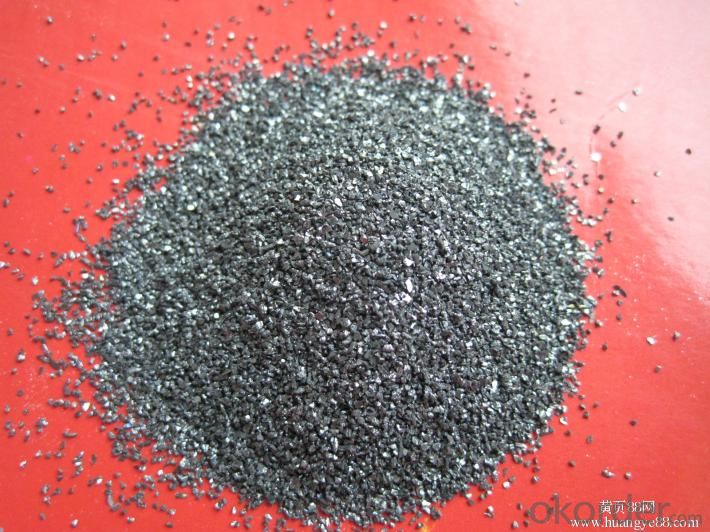
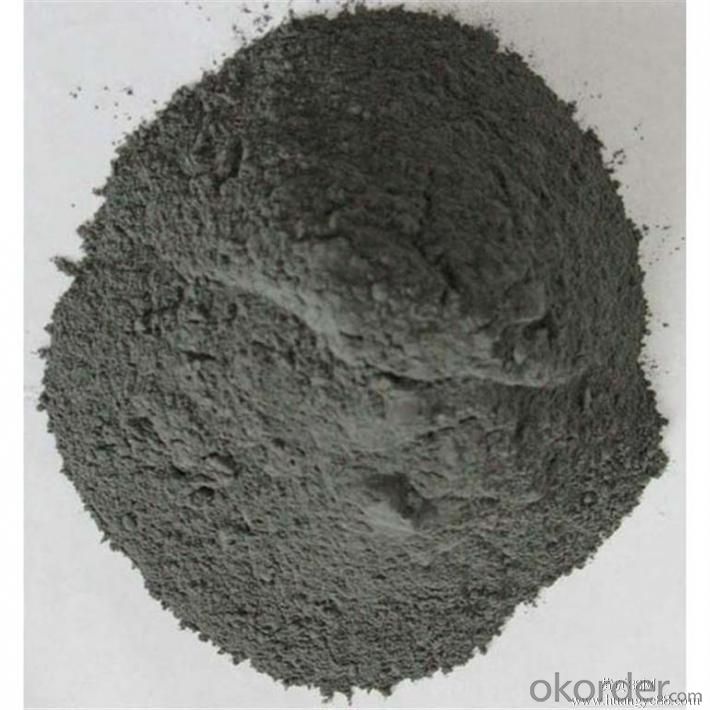
5. Calcined Bauxite Specification
1.metallurgical deoxidizer
2.high temperature resistant materials
3.as abrasive, abrasive tools can be used to such as grinding wheels, whetstones, grinding head, sand tile etc
6.FAQ of Calcined Bauxite
1). Q: Are you a factory or trading company?
A: We are a factory.
2). Q: Where is your factory located? How can I visit there?
A: Our factory is located in Ningxia, China. You are warmly welcomed to visit us!
3). Q: How can I get some samples?
A: Please contact me for samples
- Q: who knows the fire resistant levels of fireproofing glass?
- Fireproofing glass is a kind of special glass which can keep its integrity in the regular fire resistance test, and it can be divided into three classes: fireproofing glass,fireproofing glass A class is a kind of fireproofing glass that can satisfy the requirements of refractory integrity, fire resistance and thermal insulation. Including composite flameproof?glass and perfusion type fireproofing glass . This kind of glass has the properiyies of transmittance, fireproofing ( smoke insulation, fireproofing, and keeping out thermal radiation), sound insulation, shock resistance, and it's suitable for steel and wooden fire door of building decoration, windows, varnishing, partition walldaylighting?roof,ceiling?screen,perspective floor and other construction components demading for transparency and fireproofing. Class B, it's a kind of fireproofing glass that can satisfy the requirements of refractory integrity, refractory and thermal insulation at the same time. Such kind of fireproofing glasses mostly are composite fireproofing glasses and has characteristics of transmittance,fireproofing and smoke insulation. Class C, it's a kind of monolithic fireproofing glass that only satisfies the requirements of refractory integrity. This kind of glass has characteristics of transmittance, fireproofing, smoke insulation and high strength,etc. It's suitable for fireproofing glass partition wall, fire Windows, outside curtain wall and other places without insulation requirements. hope it can help you.
- Q: What kinds of refractory will be used in kiln of sintering ceramics?
- Porcelain has many classes, including acid, alkaline and neutral materials.
- Q: What are the qualifications of refractory industry?
- Certificate for production and sale is needed, just like the certificate for other products.
- Q: What are the refractory materials above 1000℃
- It is a piece of cake to meet your requirement, anyway you can try unshaped castables like corundum and other refractory materials used in steelmaking which are above 1500℃ basically .
- Q: What material is refractory material?
- alumina refractory concrete, silica brick clay brick, metal ceramic, high temperature machine coating fiber reinforced ceramics, diatomite product, asbestos products, insulation board refractory. The definition of refractory can be searched in the website.
- Q: What are the differences and connections between softening temperature of the refractory under a fixed load and thermal resistant creep property of the refractory?
- The result of refractoriness under load is temperature while the result of creep is percentage of deformation. Refractoriness under load and creep can be tested by an instrument. Refractoriness under load reflects the temperature in which the deformation reaches a certain degree under the condition of load. Creep reflects the deformation refractory has under the condition of constant temperature and load. Both refractoriness under load and creep are important criterion for the operating temperature of refractory.
- Q: What is the appropiate thickness if fire resistant time for ultra thin steel structure coating is 2.5 hours?
- According to the "code for fire protection design of tall buildings", the fire resistance time of the component is at the first level: 3 hours, beam: 2 hours, floor: 1.5 hours;if fire resistance level is level the requirement for time of fire resistance component is the column: 2.5 hours, beam: 1.5 hours, floor: 1 hours. For fire resistant coating, fire resistance time for ultra-thin fire retardant coating is shorter than 1.5 hours. If the time exceeds 1.5 hours, thick fire resistive coating should be used. Steel structure can adopt surrounding concrete or brick, fireproof coating, fireproof board coating and composite structure for its fire resisitance. Fire resisitance board can be divided into thick fire protection plate and thin plate, the thickness of the plate thickness of the fire is between 20 ~ 50mm, mainly includes calcium silicate fireproof board and expansion boring stone fire board, the main varieties are KB board, CF; thin fireproof plate is between 6 ~ 15mm thick, the main varieties include enforced short fiber cement plate, ordinary enforced fiber silicate calcium board and glass cloth reinforced inorganic board. As is known to all, steel structure usually will lose bearing capacity usually in 450 to 650 degree, leading to deformation, steel column and beam bending, and be no longer usable at last. Generally fire resistant limit of unprotected steel stucture is about 15 minutes. 1.5 hours;if fire resistance level is level the requirement for time of fire resistance component is the column: 2.5 hours, beam: 1.5 hours, floor: 1 hours. Steel structure an use surrounding concrete (or masonry), fire retardant coating, fire retardant plate and compround structure to achieve the required refractory limit. Hope my answer will help you.
- Q: What is the interior fireproof thermal insulation material?
- The methods of thermal insulation wall have three kinds of materials. First: gypsum board or cement board are stuck outside the polyphenyl board; second: lightweight brick build; third: infill polyphenyl board, lightweight brick is built outside. The first two has almost the same price. The latter is slightly expensive. 60 yuan / square meter is not very expensive!
- Q: What are the disadvantages of the refractory industry?
- The rapid development of continuous casting technology allows Hua Heng refractories to be improved in variety and quality. The development of refractory for continuous casting has a significant impact on the production of continuous casting and quality of continuous casting billet. Constructing and putting Baosteel into action has greatly pushed the improvement of the refractory technology. Continuous casting refractory is an important part of the continuous casting machine. In addition to the general characteristics of refractories, it is also required functions that can purify molten steel, improve the quality of steel, stabilize temperature and composition of the molten steel, control and regulate the molten steel flow. Therefore, it is known as functional refractories. Continuous casting Refractories include: (1) ladle refractory - ladle lining, permanent lining and ventilation components; (2) tundish refractories - permanent lining, coating, insulating plates, clad etc; (3 ) functional refractories - long nozzle for non-oxidizing casting, submerged nozzle, monolithic stopper, sliding gate; (4) ceramic purifier for purifying molten , slag dam, alkaline paint and horizontal separating ring and gate board for continuous casting.
- Q: What are the specifications of fireclay bricks?
- Dimensions of refractory bricks : 230 * 115 * 65mm
Send your message to us
Raw Materials for Refractory:Black Silicon Carbide/Black SiC for Processing Low Tensile Strength Material
- Loading Port:
- Tianjin
- Payment Terms:
- TT OR LC
- Min Order Qty:
- 25 m.t.
- Supply Capability:
- 3000 m.t./month
OKorder Service Pledge
OKorder Financial Service
Similar products
Hot products
Hot Searches
Related keywords
